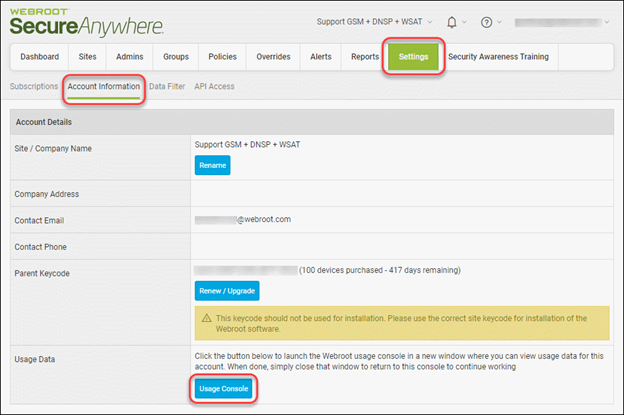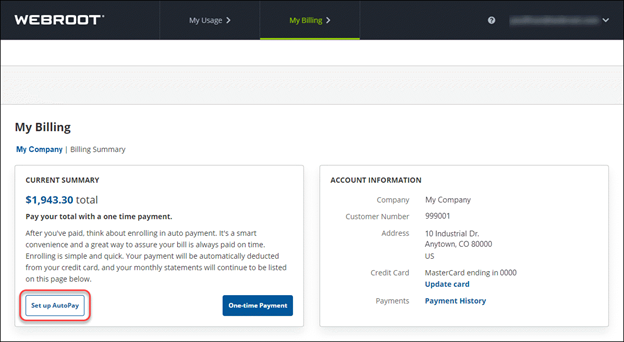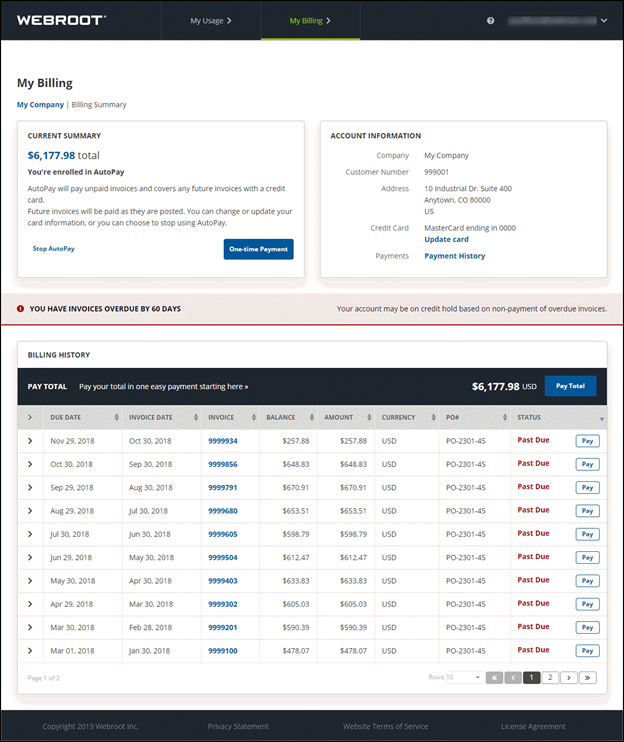

Overrides provide administrative control over the files running in your environment.
WEBROOT PORTAL SOFTWARE
Reports displays threats and unidentified software present on your endpoints, as well as the versions of SecureAnywhere they are running.Īlerts allow you to customize warnings and status messages for a distribution list of administrators. You can also select individual endpoints to see their scan histories. You can view your groups and each endpoint in the group. Groups help you organize endpoints for easy management. Policies define the behavior of SecureAnywhere on the endpoints, such as when it runs a scan and how it blocks potential threats. Not included in the example above for more information, see Accessing Product Information.

A pie chart with the SecureAnywhere versions installed on your endpoints.A bar chart with the number of endpoints that encountered threats in the last 7 days.

Click the notification to see a list of endpoints that encountered threats.
WEBROOT PORTAL CODE
For example, if your code is 123456 and it prompts you for the fourth and sixth characters, you would enter 4 and 6. Each time you log in, Endpoint Protection will require this extra security step, and will prompt for two random characters of your code or the code from your mobile authentication app.

Note: You defined your personal security code when you created a Webroot account. On the Authentication Code page (for 2FA) or the Confirm Logon page, enter the requested characters of your security code or the code from your mobile authentication app, and click Log in.The Phone tab is visible to all users, but non-Hikari Tushin users should continue to login using their email and password. Note: Hikari Tushin users can click the Phone tab to log in using their phone numbers and passwords.
WEBROOT PORTAL PASSWORD
WEBROOT PORTAL FULL
If needed, the administrator can create additional users with full or limited access for more information, see Managing Portal Users. The administrator who first created the Webroot account has access to all functions in the portal for more information, see Creating Accounts. The Management Console is a central website that administrators can use to view and manage network status.


 0 kommentar(er)
0 kommentar(er)
